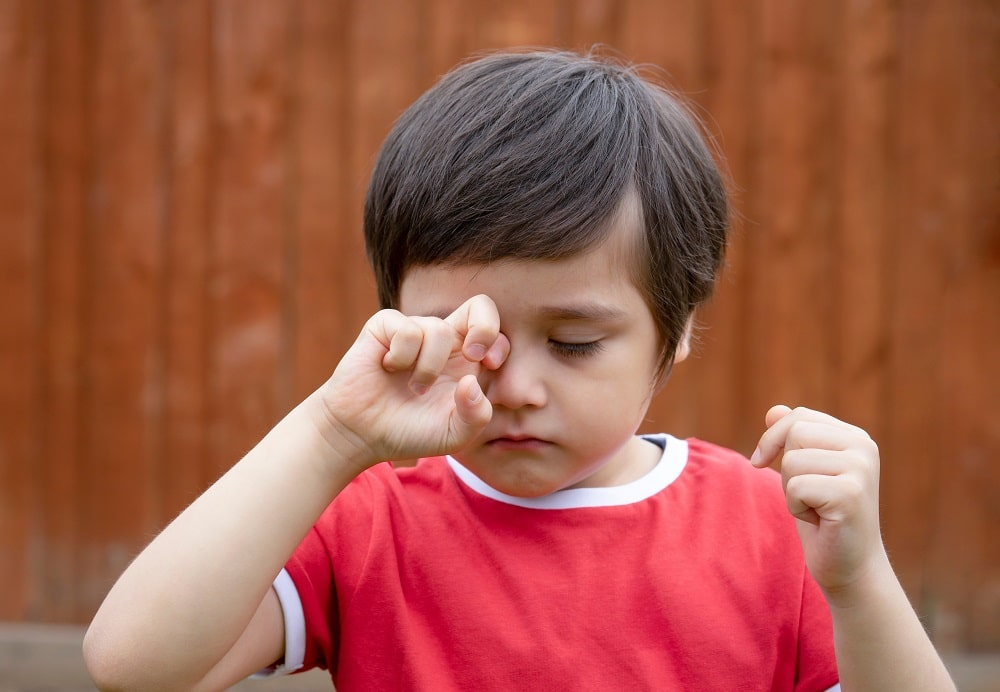What Do You Do When Your Child Has Eye Allergy?

Allergies are more common in children (particularly those under 12) than in adults in Dubai. One type of allergy is allergic conjunctivitis, or eye allergy, which is especially uncomfortable.
For some children, it may even be frustrating because of all the itching. It can affect their productivity and academic performance at school or disrupt their day at home. When they scratch their eyes too long and too hard, they’ll be left with a burning sensation.
Although an eye allergy isn’t a serious medical problem, it’s important to learn what triggers the reaction, how to remedy it, and when to take your child to an ophthalmologist in Dubai.
What Causes Eye Allergies?
Environmental allergens typically trigger eye allergies. When allergens get into the eye, the mast cells in the eye release histamine and various substances to fight the allergen. This reaction causes itching and red, watery eyes.
Allergens can be indoors or outdoors. These include:
- Pollen
- Dust
- Mould
- Pet dander
- Smoke
- Petrol exhaust
Your child may also be allergic to perfume, cosmetics, and preservatives used in medicines. Some children may also inherit allergic conjunctivitis from their parents; they’re more likely to have it if both parents suffer from it.
What Are the Symptoms of Allergic Conjunctivitis?
Most children with allergic conjunctivitis will have red or bloodshot, itchy eyes. They’re likely to rub it. Some children may also just try to roll their eyes or blink for relief. Observe your child for these signs.
Other symptoms include watery eyes and swollen eyelids; the areas above and below the eye may also swell. Some children with eye allergies may also have rhinitis, which means symptoms can include runny nose.
Allergic conjunctivitis should not cause green or yellow discharge, sticky mucus discharge, pain, or fever. If your child begins to exhibit any of these symptoms, they need to see a doctor.
Is Eye Allergy the Same as Dry Eyes?
Dry eye syndrome is different from eye allergy, but some symptoms overlap. For instance, children with either condition will both have itchy eyes. Except in eye allergy, the itching tends to be more intense than in dry eye syndrome.
Symptoms of dry eye will include blurry vision, stinging or burning ocular redness, and sensitivity to light.
Other than a difference in symptoms, the underlying cause also sets these two conditions apart. Dry eye is typically caused by some medications, meibomian gland dysfunction (blockage of oil glands) and not blinking enough.
Old age and gender may also be contributing factors to dry eye since tear production scales back as you grow older. Low humidity and allergens could also cause dry eye syndrome.
How Is Eye Allergy Treated?
To start any kind of treatment, the paediatrician must first diagnose your child with the allergy. Their doctor will then come up with a recommended plan to manage their allergic conjunctivitis.
In most cases, over-the-counter drugs, like loratidine and cetirizine, will be part of their treatment. A lifestyle adjustment is also likely since continued exposure to allergens will worsen your child’s allergy.
Some of these adjustments may include:
- Washing their hands after handling the pet or any animal.
- Wearing eyeglasses or sunglasses when going outdoors.
- Keeping the windows closed and using air conditioning at home.
- Washing the allergens off from their face with a wet washcloth after being outdoors.
- Washing their hair every night since it can collect pollen.
- Applying cold compress to puffy eyes.
- Not touching their eyes.
- Controlling the urge to rub their eyes.
If your child wears contact lenses, it may be time to consider LASIK eye surgery in Dubai. Lasik can make symptoms of allergy less of a problem since it eliminates the need for your kid to wear contacts. They don’t have to touch their eyes if they’re not using contact lenses to see better.
If mould is the primary allergen, you must keep the humidity level in your home down to 30% to 50%. Mould grows at 55% or higher humidity levels. You can also use a dehumidifier in areas of your home where it’s likely to be humid or moist, such as the basement, bathroom, or kitchen.
With less exposure to allergens, your child’s eye allergy will be managed.
What Are the Types of Eye Allergies?
There are different types of eye allergies, with seasonal being the most common. Seasonal eye allergy is when allergens are more potent. In Dubai and elsewhere in the UAE, allergy season is typically around summer.
Then there’s the type that occurs all year round, perennial eye allergy. Some types of eye allergies are classified according to how they present. Atopic keratoconjunctivitis, for instance, affects the lower eyelid whereas vernal keratoconjunctivitis affects the upper eyelid.
When the inside of your child’s eyelid gets red, swollen, and irritated, they may have giant papillary conjunctivitis. Most people who wear contact lenses develop this type of eye allergy.
Eye allergy is not a serious medical problem, but it pays to watch your child for symptoms of it. This way, you ensure protection for their eyes while keeping your home allergen-free.






